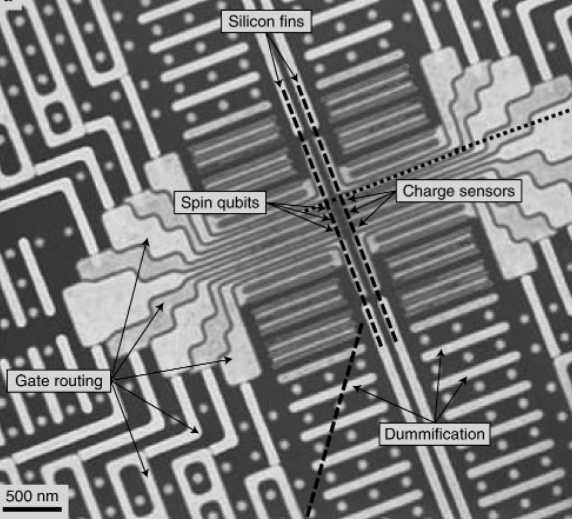Researchers have fabricated silicon spin qubits on a single wafer in a process that shows the possibility of producing qubits alongside conventional chips using the same fabrication facility.
The process they developed created 10,000 chip arrays with several silicon spin qubits per array on a single wafer with more than 95% yield, far above the qubit count and yield of a typical university or lab process. The research demonstrates it is possible for qubits to someday be produced in plants that also make conventional chips.
Some chip manufacturers are actively pursuing ways to produce qubits in mass quantities for use in quantum computers. Having a qubit production process that can work alongside a conventional chip production process would create efficiencies and lower costs.
The research is described in an article in Nature Electronics written by researchers at Intel Labs and QuTech, an advanced quantum computing research center made up of teams from University of Delft and the Netherlands Organization for Applied Scientific Research. They created the silicon qubits using a 300mm all-optical lithography process at Intel’s facility in Hillsboro, Oregon.
“A major advantage of silicon spin qubits is that they could leverage decades of technology development in the semiconductor industry,” the researchers wrote. They described the existing engineering feat of making integrated circuits with billions of transistors that is enabled by techniques such as plasma etches and chemical mechanical polishing. “These processing conditions…will be key to achieving the extremely high yield necessary for the fabrication of thousands or millions of qubits in a functional array.”
The researchers said their methods support a promising outcome for the quantum computing field. “The compatibility of silicon spin qubits with fully industrial processing demonstrated here highlights their potential for scaling and for creating a fault-tolerant full-stack quantum computer,” they said. They added their process steps can be integrated with other complementary metal oxide chip technology “which opens up the potential to integrate classical circuits next to the qubit chip.”
The research article noted there are still “significant challenges to overcome to engineer out…defects and improve performance and scalability” but said their 300 mm research process will allow them to run a high volume of experiments to accelerate the work.

The research was first published March 29, but comes in advance of World Quantum Day on Thursday, which is expected to raise awareness about achievements in the field by various quantum computing researchers and startups.
RELATED: Quantinuum’s Duncan Jones on quantum-safe encryption